Skelhuset is a house in the woods in Vodskov, Denmark, that is a social and activity place for people with young-onset dementia. The house is a regular Danish house with kitchen, dining room, patio, yard, and garden to take care of. People in the municipality who are under age 65 or were diagnosed with a type of dementia before age 65 are welcome to participate. Lunch is offered for 25 kroner (about $5 USD) and a hot evening meal (often with wine or beer) is offered for 40 kroner (about $9 USD), and transportation to and from the house can be arranged. The goal of the activities at Skelhuset are to keep people active in their daily lives and to create a social place. As far as I can tell, the participants only have to pay for their meals and the rest is covered through government health and social care funding. Medications are given if they are brought with (people need to take them independently) and incontinence does not exclude them from the service. You can read more about Skelhuset here (in Danish).
My internship there is to observe the activities and how well they represent the municipality’s goals in their services for young-onset dementia.
*Note: I asked permission before taking any pictures with people in them and none are taken without direct permission*
The first day, we started by visiting the horses down the road and feeding them leftover bread and grass. The horses are used in equine therapy and are stabled at a group home for children with autism, ADHD, and similar disorders, so sometimes the children are also outside with the horses.
We took a long walk in the forest, about 4 kilometers. I am impressed with the vigor some of the participants have – there was even a little foot race to get up a hill! We spent time smelling and identifying flowers and plants, identifying bugs and animals, and letting the participants decide which path we should take. It was an incredibly stimulating sensory experience.
Some pics of the forest. These are actually the road I walk to get to Skelhuset, but you get the idea. Just walking to work puts me in a great mood to be in this environment. I imagine it isn’t as lovely in the winter months, but this is a great time of year to be working there.

Videnscenter for Demens – the office for the Research Center on Dementia (Skelhuset is another kilometer down the road)
Later in the day, I was sitting outside with one of the gentlemen while others worked on the new patio, rested, or helped around the house. We were chatting a little bit and he was having a hard time getting the words out. I could tell he was getting frustrated with himself, so reassured him that I’m just enjoying sitting on the bench and when the words come, then we’ll talk more. A few minutes later, he pointed a finger upwards and got up and went into the house. When he came back, he had his wallet with him and opened it up. The first picture, he told me “this is my wife.” IN ENGLISH! When I had introduced myself during lunchtime, I had mentioned that I was from South Dakota in USA but have been living here for 9 years. I speak in Danish the whole time, so was really surprised and touched that he was making an effort to speak to me in English. He showed me other things in his wallet, like his membership to the Music Academy, and told me that he had traveled around the world as a musician, and his favorite country to visit was USA. Needless to say, this gentleman already has a soft spot in my heart.
Here are some pictures of the inside of the house.
This is the main room and where we have our meals together. They make a point that we should all sit together during meals. Most of the time, the participants help to set and clear the table as well as help in the kitchen. Of course, as happens, the workers may take over this task if time is running short.
The primary kitchen has a window facing the front yard and driveway, and a cutout facing the dining area and out to the patio and back yard. It has a cozy breakfast nook with a bench, where the participants can sit and help to peel potatoes or to watch the action.
One of the rooms is used as a living room for resting and music activities. There is another kitchen and bathroom attached to this room, but these are not used as often. This kitchen might be where they bake bread, and this bathroom has a shower if it would be needed.
There is another room off of the main dining room which can be used as an office space and has a futon where the participants can take an afternoon nap or to rest quietly.
My second day, there were mostly new faces, as not everyone comes every day to Skelhuset. We started the day with breakfast together (rundstikker) and then quickly got into our activities for the day. Some were helping with the terrace outside. The tables and patio were already there, but they wanted to build a shelter roof over the top to protect from rain and to give a bit of shade when sitting outside. It was so much fun to see the guys enjoying their hard work and joking around with each other. When I would ask the Danish name for tools and actions, they liked to have a good laugh by telling me the “farmers” words and then laughing at how I pronounced them! Ah, these guys!
While some were working on the patio roof, others were dusting and vacuuming inside the house, and some were pulling weeds from between the patio tiles.
These two were working in the front yard, staining a new wooden table that was recently built at a group workshop down the road. It really is like they are active in keeping up their own house, deciding what and how things can be done and doing it themselves.
One of the days, we decided to have some music! Two or three of the gentlemen were professional musicians, and most every Dane grows up signing traditional songs at school and holidays. If you haven’t been in Scandinavia, you may not believe it, but there are traditional songs that are sung around the yule log at Christmas or around the bonfire for Midsummer Night’s Eve. This particular day, we had two guitarists with us and one employee who was trained in music therapy. We got warmed up while others were preparing afternoon coffee, and then the singing carried on around the table with our coffee. It was quite fun for me to experience, but not everyone is into singing, or this type of music, so it only lasted half an hour or so.
If you notice the bean bag looking chair that the woman in red is sitting in, this is a calming chair that has been borrowed from another institution. The chair has large balls inside (I didn’t see them, but the feel reminds me of the balls in the play areas at McDonald’s) and then there are flaps to fold over the shoulders and lap that have a heavy weight to them. I also tried out the chair and it was very calming. Like a chair hug.
There were plenty of instruments to choose from, but we mostly stuck with guitars, rhythm eggs, bells, and xylophones.
The rest of the days carried on with various daily activities and a mix of adventures. Every other day or so, we would need to go to the store to buy food for supper that night and breakfast the next morning. Those who wanted to all jumped in the van and we would go sale hunting in town. They were given a lot of responsibility to choose which meat or vegetables or products they wanted, to push the cart or carry the basket, and to go off to fetch several items at once. I noticed that grocery shopping was also a sensory stimulating experience, and we would talk about the smells of the produce, the colors of the clothes, they would touch and tap on surfaces a lot (glass, plastic, metal, mystery items), and would help bag the groceries before we headed back home. There were some shopping trips I didn’t join, and when they got back, there were fun stories of how there was rum tasting or wine samples or hot dogs at the store that day.
One of the days, they worked on framing posters they had purchased at a flea market. I think they came from an old school that was closing. Danish scenery and Danish phrases – a perfect touch to the house!
Nearly every day included a walk in the forest, or at least down to feed the horses some bread, carrots, and grass. And there were also regular household chores to do, like helping with the cleaning, setting the table, dishes, getting the mail, etc. They really practice their daily life activities at Skelhuset, and it felt very much like being part of a family there. When one of them was having difficulty with eating or finding their glass, others would help them. When someone would repeatedly ask for their spouse, the others could start to chime in and remind them that they are at home, and they will go home to them in a short while.
One day, we took an adventure to the local Zoo in Aalborg, and everyone was excited. They were all joking with each other that we were going to “visit their family today!” The jokes kept going as we were there, and nearly every monkey or ape cage was welcomed with comments of “I see your uncle over there.” Ah, these jokesters! We saw most of the exhibits, including a temporary one on dinosaurs. One man and I got in a roaring match with one of the dinosaurs, and we couldn’t figure out if it was motion/sound activated or if it really would just roar all the time like that.
We brought along coffee, tea, and hindbærsnitter (raspberry cakes) for our afternoon coffee, which we enjoyed while watching the giraffes and zebras.
On my second to last day there, which was also Sankt Hans Aften (the celebration of Saint John the Baptist/Midsummer Night’s Eve), the group showed up visibly shaken. There had been an incident in the bus on the way to Skelhuset (a special bus service picks up and drops off the participants, and are sensitive to their health conditions. This service is available to many groups of people, such as children with disabilities, adults with disabilities, people who have mental health issues, etc.). One of the gentlemen (who had recently been taken off his medications by a new doctor) had been agitated that morning but the nursing home sent him on his way anyway. He was not calmer when he got in the bus and soon was threatening the other passengers, got up and was pacing back and forth in the bus, and trying to get out. The doors automatically open and close and are controlled by the driver, who pulled over to calm the man down, and eventually returned him to the nursing home.
On a side note, the same gentleman was prescribed by his doctor to take daily runs. Which is quite appropriate, since he has a strong tendency to wander, and when he wanders, he takes off running and the police usually find him 5 or 6 kilometers (3-4 miles) away. He is a strong man and likes to run, and I applaud the doctor for using physical exercise as a type of natural sedative rather than medicating. BUT…. as one of the workers put it, “it’s easy to throw balls up in the air, but who is supposed to catch them?” Meaning, it sounds like a good therapeutic intervention, but who is going to take these daily runs with him? His wife, who doesn’t live at the nursing home with him and is into her 60s as well? Us at the house, who are responsible for all the people there? What’s good in theory isn’t always feasible in practice.
The other participants were upset (understandably) and worried about their friend and what would happen to him (understandably). They are like family, and many have known each other for years. The staff at Skelhuset were also upset, knowing of the recent medication changes, and frustrated that the nursing home would send a man having what appeared to be a psychotic episode into a bus and out in society. They put some coffee on and started taking the participants into quiet spaces to discuss what had happened in the bus, how they felt about it, what their concerns were, and to provide compassionate care.
Lunch that day was delayed by about an hour. And quiet. We ate outside under the newly finished terrace roof. Conversation was hard to come by and making light of other conversation just wouldn’t work. After about half an hour of some small talk, one of the employees said that it was a difficult situation they witnessed this morning, and he was wondering how they are. Were they scared? They responded that they weren’t scared that their friend would hurt them, but they were scared he would jump out into traffic, or cause the driver to have an accident. They were worried about him, and knew that he wasn’t being himself (their insight into the situation and ability to articulate emotions and causes touched me). The employee also told them that he he was impressed they could keep their cool when the man was threatening violence against them, and that he thought they handled the situation very well. I couldn’t agree more, and I was also impressed with the employee taking the time to let each person voice their feelings and concerns, and supporting the decisions they made.
We tried to decide what we should do for Sankt Hans, and what we should make for a special dinner that evening. No one had ideas. Not a peep. So, we got out the advertisement magazines that come in the mail and looked through the sales for inspiration. We decided on pork meatballs, sweet corn, and new potatoes, which are just coming into season. And off to the grocery store we all went. By the time we got back, it was time for afternoon coffee and cake, which we also enjoyed outside. After coffee, we took a long walk in the forest. We talked about traditions and folklore. They told me that single women should pick 7 wildflowers to put under their pillow on Sankt Hans Aften, and the flowers will reveal her husband to her in her dreams that night. I also know from shamanism studies that the night before the Summer Solstice (which Skt. Hans is the Christianization of the pagan celebration) is when shamans, medicine men, and other traditional healers go into the forests and jungles because it is easier to communicate with the plants on this magical night. So, it actually makes sense to me, and I think they were surprised that I readily believed them 🙂 They helped me pick my wildflowers, and I did put them under my pillow that night. However, I only got about 5 hours of sleep as I was up late working on writing up the internship report in Danish, so barely remembered my dreams.
When we got back from our adventures in the forest, we got to work on our Sankt Hans celebrations and the mood was lifting a bit. We made a small bonfire, as the Sankt Hans Aften tradition is to have a big bonfire and burn an effigy of a witch to send the bad spirits away, and started the grill.
It was still a fairly somber supper, but we enjoyed as best we could with heavy hearts and minds. We talked about different Sankt Hans traditions and what they had done to celebrate over the years. This cultural insight is interesting for me, and I think they were surprised to hear that we don’t do anything traditional for Midsummer in most of the US (not that I ever knew of at least), especially since so many Europeans emigrated to there.
The next day, one of the staff brought in her 3 year old dog, Molly, for the day. Molly has been coming to Skelhuset since she was a puppy and is used to the activity there. The employee was telling me that there have been a few times when a person was agitated or having an off day, and Molly has provided a lot of comfort on some of these occasions. You could see in the participants’ faces how happy they were when they saw Molly come running to greet them! Everyone got a turn petting her and saying hello and talking to her. She was also a good source of entertainment when the room would get quiet, we could all watch what she was doing, interact with her, and then strike up conversations about that. We talked about Animal Assisted Therapy (I was certified in this during my Master’s studies in Texas) and how it is a great tool in dementia care. I am a firm believer that connecting with nature (people, environment, animals) is vital to one’s quality of life, and I found that Skelhuset is an excellent example of this. Daily walks in the forest, feeding the birds and distinguishing their songs, taking carrots down to the horses, and now playing with Molly – well done, Skelhuset, very well done!!
For my last day at Skelhuset, I baked banana bread to take in for our afternoon coffee. They don’t have banana bread in Denmark (they do have banana cake, but it is much sweeter and more like a pound cake), so I thought this would be a fun treat for them. And it’s about the only think I bake, besides muffins and the occasional cake. We had our afternoon coffee outside on the terrace, and played guitar and sang songs together. It was a very cozy afternoon and made for some good goodbye memories. They all said they liked the banana bread and asked what was in it, how I made it, if this is a traditional food from South Dakota. I will email the recipe to the staff next week if they want to make it again sometime.
When we were finished, I told them that this was my last day as an intern here, and that I have had such a great time getting to know them and to take part in the fun activities they do up here. They weren’t happy that it was my last day, and said they would miss me, too. A few hugs were given, and I managed to keep dry eyes. Within minutes, the bus came to pick them up and everyone was off. It seemed like an abrupt ending to such a wonderful month. I hope that I get the time to come back and visit them as a volunteer before we move to Copenhagen.
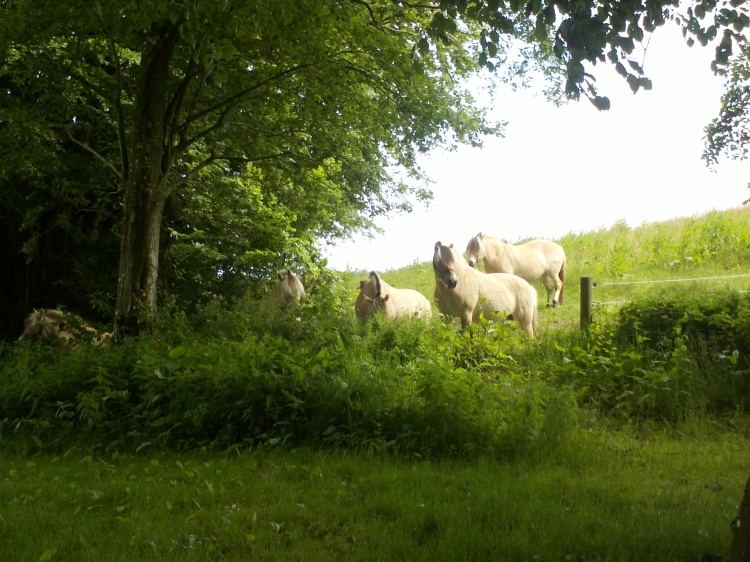




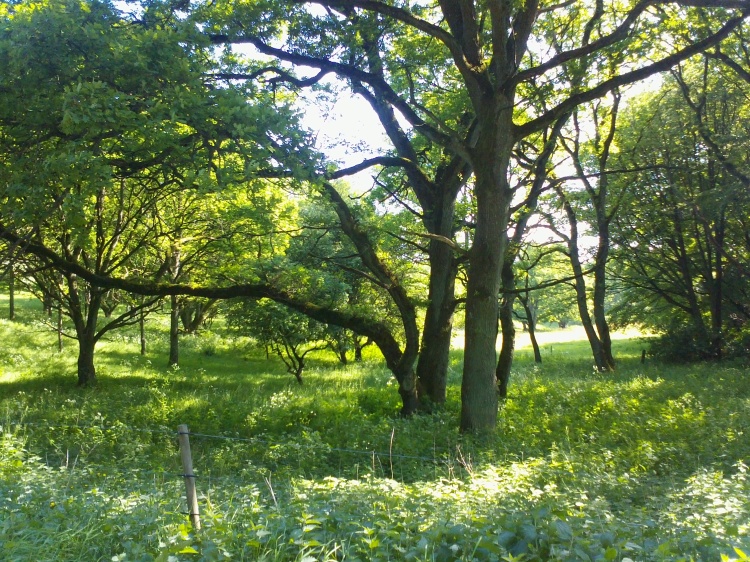
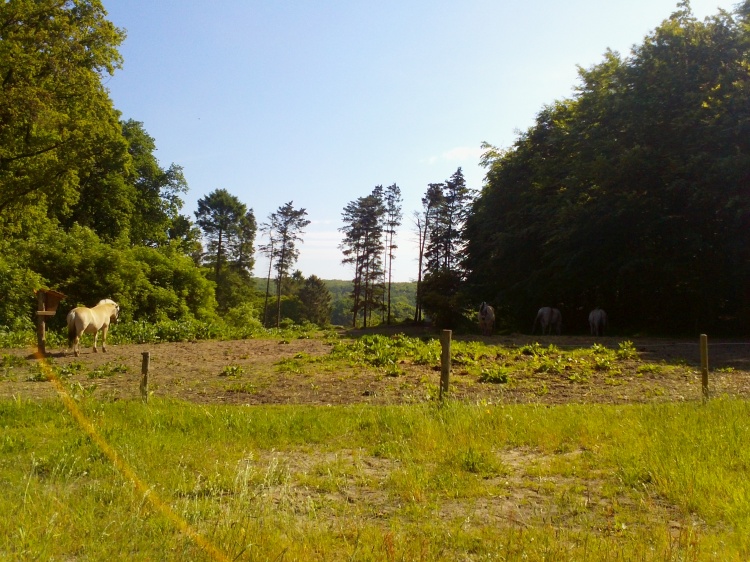










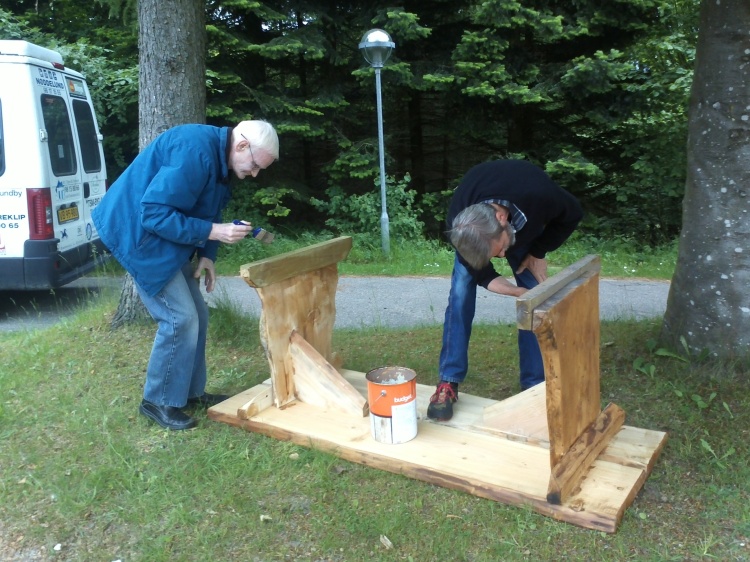

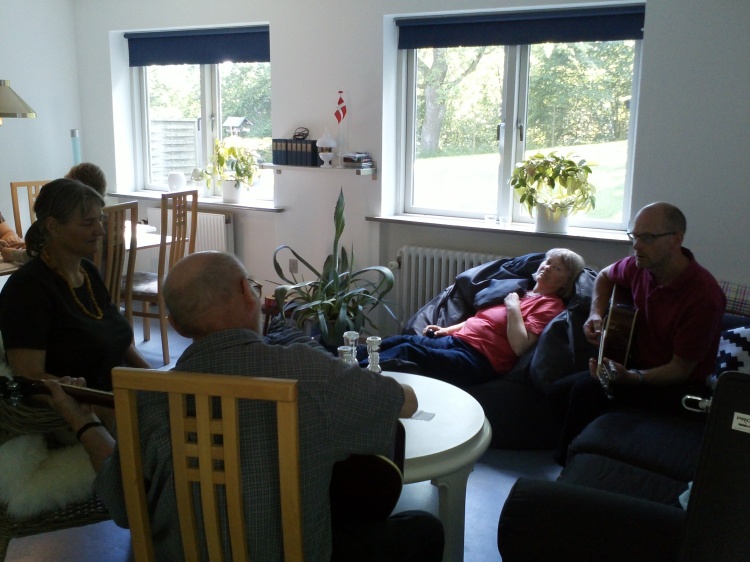








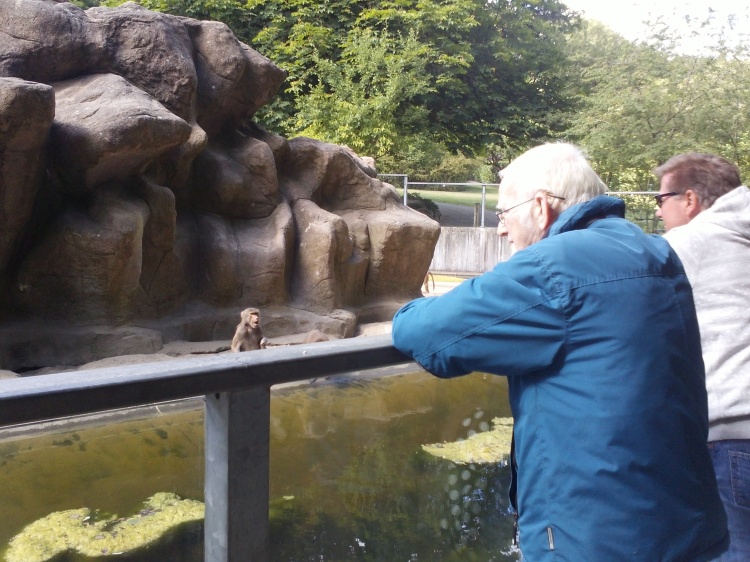


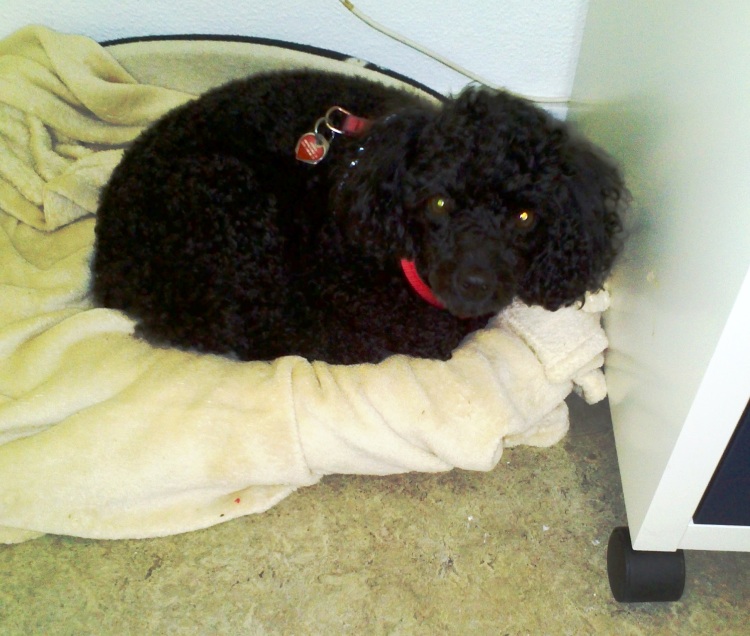



Pingback: Exciting work for Doctor Dementia! | Doctor Dementia and the Dementia Adventure